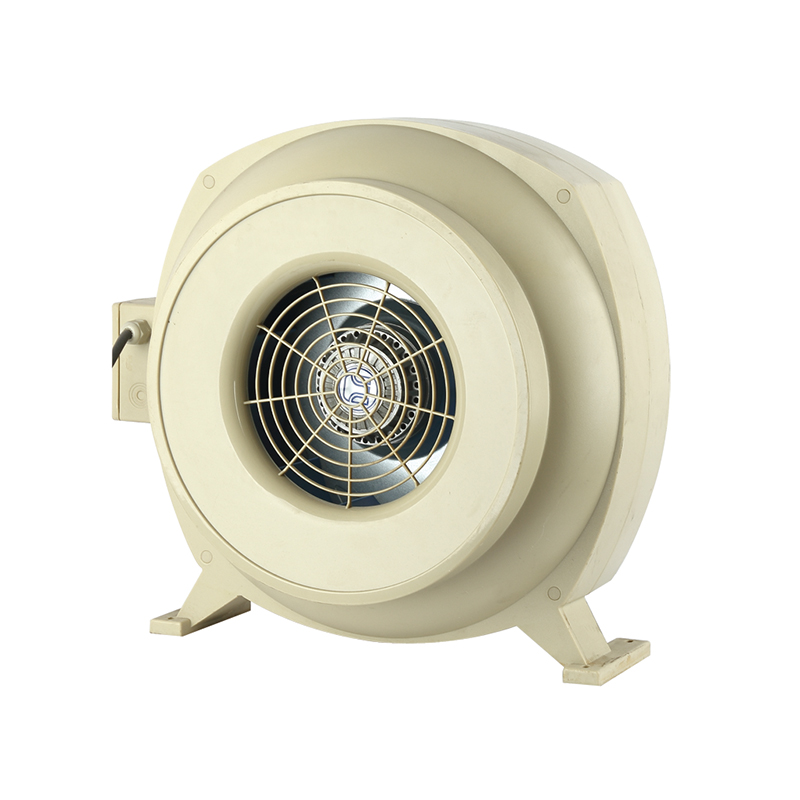Qinlang focuses on providing high-quality products and considerate services, and is committed to meeting every expectation of our customers.
The DKT-133 Cooling Ventilation Double Inlet Air Conditioning Fan is d...
See DetailsChoosing the right round inline exhaust fan is crucial for efficient ventilation, whether for bathrooms, kitchens, or industrial applications. A properly sized round duct fan ensures good airflow, minimizes noise, and prevents energy waste.
Why Proper Sizing Matters
An undersized round inline exhaust fan won't move enough air, cause poor ventilation and lingering odors. Conversely, an oversized round duct fan wastes energy and may create excessive noise. The key is balancing airflow with your space's requirements.

Step 1: Calculate the Required CFM
step in selecting a circular inline fan is determining the necessary CFM. For most residential applications, the formula is:
CFM = Room Volume (Length × Width × Height) × Air Changes per Hour (ACH) ÷ 60
- Bathrooms: Typically need 8-10 ACH (more if high humidity).
- Kitchens: Require 10-15 ACH due to cooking fumes.
- Commercial/Industrial Spaces: May need 20+ ACH for proper ventilation.
For example, a 10' x 8' x 8' bathroom (640 cubic feet) with 8 ACH requires:
640 × 8 ÷ 60 ≈ 85 CFM – meaning an 85 CFM round inline exhaust fan would be ideal.
Step 2: Consider Duct Size and Length
The diameter of your ductwork affects the performance of a round duct fan. Common sizes include:
- 4-inch ducts: Suitable for small bathrooms (up to 50 CFM).
- 6-inch ducts: Better for medium spaces (50-150 CFM).
- 8-inch+ ducts: Needed for large areas or industrial use (150+ CFM).
Longer ducts or bends increase resistance, reducing efficiency. If your duct run exceeds 20 feet, consider a higher-CFM circular inline fan to compensate for pressure loss.
Step 3: Match Fan Type to Application
Not all round inline exhaust fans are the same. Key types include:
- Standard Round Duct Fans: for general ventilation.
- Booster Circular Inline Fans: Improve airflow in long duct runs.
- High-Static Pressure Models: Ideal for systems with filters or complex ducting.
For bathrooms, a basic round duct fan with moisture resistance works well. For kitchens or workshops, a more powerful circular inline fan with grease or dust resistance may be necessary.
Step 4: Check Noise Levels (sones)
A loud round inline exhaust fan can be disruptive. Look for models rated under 1.0 sones for quiet operation in homes. Industrial settings may tolerate higher noise levels (3-6 sones).
Step 5: Ensure Proper Installation
Even round duct fan won't perform well if installed incorrectly. Follow these tips:
- Mount the circular inline fan as close to the exhaust point as possible.
- Use smooth, rigid ducts to minimize airflow resistance.
- Seal all joints to prevent air leaks.
To summarize, sizing a round inline exhaust fan correctly involves:
1. Calculating CFM based on room size and usage.
2. Matching duct size to fan capacity.
3. Selecting the right type of round duct fan for your needs.
4. Considering noise levels for comfort.
5. Ensuring proper installation for peak efficiency.
By following these steps, you can choose the great circular inline fan for your system, ensuring effective ventilation and energy savings. Whether for a small bathroom or a large workshop, the right round inline exhaust fan makes all the difference.